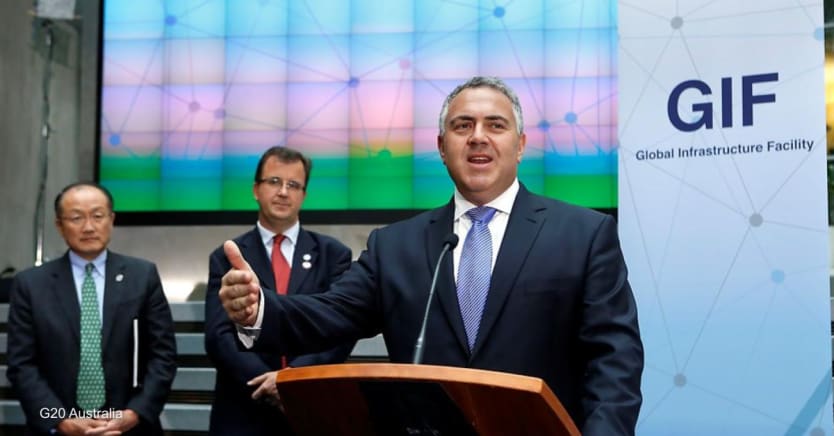
With approximately 75% of the global infrastructure that will exist in 2050 not yet built, there is a clear opportunity for growth in sustainable infrastructure. But attracting private finance to those projects — particularly in low-income countries — remains challenging.
Among the key barriers for low-income countries are a lack of bankable projects, poor government capacity and processes, a lack of standardization, and higher levels of risk. But a number of initiatives are underway to tackle some of those challenges, including the Global Infrastructure Facility and the Finance to Accelerate the Sustainable Transition – Infrastructure initiative, or FAST-Infra.
Sign up for Devex Invested
The weekly newsletter on how business, social enterprise, and development finance leaders are tackling global challenges.
The recovery from the economic crisis induced by COVID-19 is uneven. But to ensure the recovery is sustainable, domestic and international stimulus efforts should be geared toward green infrastructure investments, said Jérôme Haegeli, group chief economist at global reinsurance company Swiss Re.
“Global economic healing is not a sprint, which is why infrastructure investments and the work of GIF is so crucial,” he said during a press call last week.
The need in emerging markets and developing economies is immense — less than 1% of equity and debt infrastructure investments in those countries comes from the private sector, Haegeli said. Due to the risks and challenges involved, institutional investors in particular need to co-invest with the likes of the International Finance Corp. for now.
The true game changer would be turning sustainable infrastructure into a tradeable asset class, which would create discipline around the sector and make the projects more attractive to investors, Haegli said.
“[The Global Infrastructure Facility should] go from being a pilot to being permanent.”
— Daniel Zelikow, chair of the governing board, J.P. Morgan Development Finance Institution“This is a unique opportunity to create a gold standard of what defines sustainable infrastructure” and work on standardization of contract terms and create some disclosure harmonization, Haegli said. Sustainable infrastructure typically refers to roads, buildings, and energy and water infrastructure that are built with consideration for the environmental, social, and governance impacts they will have.
FAST-Infra, a two-year-old initiative aimed at mobilizing finance and de-risking investments in sustainable infrastructure in emerging markets, is trying to do that by bringing together its nearly 100 members to create a framework for assessing projects and an official label identifying what qualifies as a sustainable infrastructure project.
Creating such a label, along with underpinning standards, will help attract investors and signal to project developers and governments what should be incorporated in the development stage, said Christian Déséglise, head of sustainable finance and investments at HSBC.
The initiative is also creating a platform to address another problem: risk. The platform will help develop derisking and mobilization mechanisms using tools that have worked in the past, including liquidity guarantees to cover loans or offtake risk, he said.
“There is vastly more potential to create bankable projects than is being exploited,” said Daniel Zelikow, chair of the governing board of the J.P. Morgan Development Finance Institution. That is in large part due to governments’ inability to put in place “necessary public sector backstops” in the form of efficient processes and well-designed concessions, he said.
Scaling human resources in particular is critical to help emerging market governments prioritize the preparation of projects, improve the request for proposal solicitation process, and better evaluate bids.
► The push for environmental, social, and governance standards
ESG and sustainable investing grew in 2020, even in the wake of the COVID-19 pandemic. Now, efforts to standardize metrics and increase comparability are also on the rise.
Governments often have limited experience with these processes, and technical partners from multilateral institutions are well-positioned to help them run the process effectively and help investors participate, Zelikow said. That is at the core of what the GIF does, and it should “go from being a pilot to being permanent” and “should be scaled up tremendously,” he said.
Between GIF and its partner multilateral development banks, there should be a major mobilization of human resources and technical assistance, Zelikow said, calling for hundreds of people to be deployed to provide support to governments.
GIF, which was founded through an initiative of the G-20 group of nations and is based at the World Bank, finished its pilot 5-year program last year and is working to replenish and scale up.
Sovereign risk also plays a key role in whether or not a project can be financed, so debt levels and credit ratings or downgrades in the wake of the pandemic could have a negative impact, he said.
In the frontier or lower-income countries where investments are the hardest to make, an infrastructure project related to international trade or transport is easier to fund than one that is purely domestic, Zelikow said. Countries should also be cautious about overusing the public private partnership structure and be sure that incorporating private finance best meets the needs of a project. In some cases, it may cost less for the government to finance it directly, he said.









